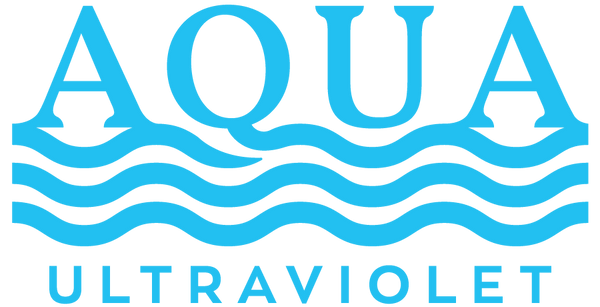Air Filtration Systems Market

AIR FILTRATION SYSTEMS
What is Ultraviolet?
Ultraviolet light is part of the light spectrum, which is classified into three wavelength ranges:
- UV-C, from 100 nanometers (nm) to 280 nm
- UV-B, from 280 nm to 315 nm
- UV-A, from 315 nm to 400 nm
What is Germicidal Ultraviolet?
UV-C light is germicidal – i.e., it deactivates the DNA of bacteria, virus and other pathogens and thus destroys their ability to multiply and cause disease. Specifically, UV-C light causes damage to the nucleic acid of microorganisms by forming covalent bonds between certain adjacent bases in the DNA. The formation of such bonds prevent the DNA from being unzipped for replication, and the organism is unable to reproduce. In fact, when the organism tries to replicate, it dies.
What are the beneficial uses of Germicidal Ultraviolet?
Ultraviolet technology is a non-chemical approach to disinfection. In this method of disinfection, nothing is added which makes this process simple, inexpensive and requires very low maintenance. Ultraviolet purifiers utilize germicidal lamps that are designed and calculated to produce a certain dosage of ultraviolet (usually at least 16,000 microwatt seconds per square centimeter but many units actually have a much higher dosage.) The principle of design is based on a product of time and intensity – you must have a certain amount of both for a successful design.
How do Ultraviolet Purifiers work?
Aqua Ultraviolet Air Sterilizer units contain one or more germicidal ultraviolet lamps. Germicidal Lamps are shortwave, low pressure tubes that produce ultraviolet wavelengths lethal to microorganisms. Approximately 95% of the ultraviolet energy emitted from germicidal lamps is at 254 nanometers, the region of germicidal effectiveness most destructive to bacteria, mold and virus. Therefore, the water or air that passes through the chamber is exposed to the germicidal uv light and the genetic material of the microorganism is deactivated, which preventing them from reproduction and rendering them harmless.
Why UV-C Cannot Produce Ozone
The Ultraviolet Germicidal Irradiation (UV-C) wavelength is an invaluable tool for an HVACR system. By leveraging germicidal energy to keep refrigeration coils free of microbial growth, facility managers also enjoy the benefit of reducing the spread of airborne infectious agents.
However, some facility managers may hesitate to leverage these benefits for their application due to a concern about ozone. While the Ultraviolet spectrum contains four separate wavelengths—UV-A, B, C and Vacuum UV—each operates at different energy levels and only one is capable of producing ozone (Vacuum UV).
As you’ll note in the graphic below, Vacuum UV operates in the 100-200nm range, where it is capable of producing ozone. UV-C, conversely, reaches its optimal germicidal strength near 253.7nm. Because ozone may only be produced below 200nm, at 253.7nm (rounded to 254nm), the germicidal wavelength does not generate ozone.
In addition to the stronger 254nm wavelength that does not produce ozone, UV-C lamps offer another layer of ozone protection.
Most germicidal lamps, including those from UV Resources, are produced with doped quartz glass, which blocks the transmission of the 185nm ozone-producing wavelength. The doped quartz glass allows the 253.7nm radiation to pass through, but it blocks the 185nm wavelength from escaping. Therefore, germicidal lamps with doped glass CANNOT produce ozone.
WHAT IS OZONE?
Ozone is present in low concentrations throughout the earth’s atmosphere. Some researchers say that this chemical is “good up high, but bad down low.” Without the ozone layer protecting our Earth’s stratosphere, for example, the Sun’s ultraviolet radiation would make life on Earth uninhabitable. At street level, however, a high concentration of ozone is toxic to plants and animals. In humans, ozone can irritate nasal passages, cause nausea and extended exposure can lead to lung inflammation.
Ozone, also called Vacuum Ultraviolet (UV-V), is a gas molecule that contains three (3) oxygen atoms – and as such, it has a destabilizing effect on oxygen in the air (leading to its irritation and danger to humans). A UV lamp “tuned” to 185nm can create ozone from oxygen (O2) by disrupting the O2 molecule and splitting it into two oxygen atoms. These two oxygen atoms attempt to attach to other oxygen molecule (O2). It is the attachment of this third oxygen atom that creates ozone (O3).
Ironically, UV light in the 240-315nm wavelength will break this third oxygen atom attachment above and convert it back to oxygen. The peak ozone destruction occurs at the 254nm wavelength. So, a UV-C lamp at the 253.7nm wavelength will actually destroy ozone!
ASHRAE has said that certain air cleaners produce ozone and thus, its position is to recommend discontinuing utilizing “devices that use the reactivity of ozone for the purpose of cleaning the air.”[1]
KEEPING PERFORMANCE SUSTAINABLE
Keeping buildings operating at their most efficient level and sustaining that performance over the life of a building is one of today’s key challenges for specifying engineers, HVACR contractors and facility managers. Today, with germicidal technology, virtually all HVACR systems are potential candidates because of the many proven operational benefits it offers, including: (a) destruction of surface and airborne microorganisms; (b) the restoration and preservation of heat transfer and airflow capacities to “as-built” conditions; (c) greatly improved indoor air quality; and (d) reduced maintenance.
Again, while UV-C technology has been proven to restore HVACR performance to its original capacity, specifying engineers, HVACR contractors and facility managers can rest assured that the germicidal wavelength is incapable of producing ozone. Moreover, the 253.7nm germicidal wavelength will destroy ozone.
So stay ozone free in the 254nm zone.
